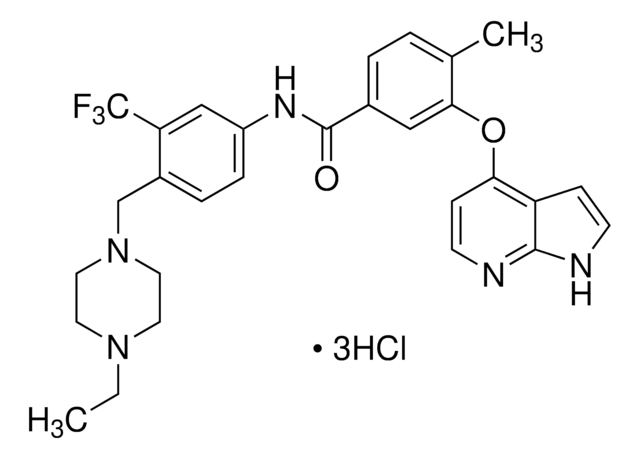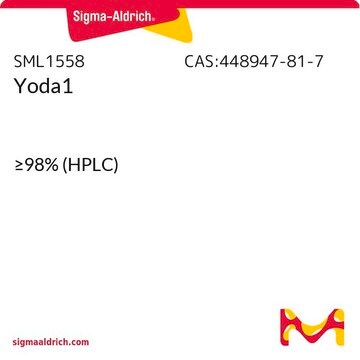ABS45
Anti-phospho-MYPT1 (Thr696) Antibody
from rabbit, purified by affinity chromatography
Sinónimos:
Myosin phosphatase target subunit 1, Myosin phosphatase-targeting subunit 1, Protein phosphatase myosin-binding subunit, myosin phosphatase, target subunit 1, protein phosphatase 1, regulatory (inhibitor) subunit 12
About This Item
Productos recomendados
biological source
rabbit
Quality Level
antibody form
affinity isolated antibody
antibody product type
primary antibodies
clone
polyclonal
mol wt
(~130 kDa observed; 115.28 kDa calculated. Uncharacterized bands may be observed in some lysate(s).)
purified by
affinity chromatography
species reactivity
human
species reactivity (predicted by homology)
canine (based on 100% sequence homology), rat (based on 100% sequence homology), primate (based on 100% sequence homology), mouse (based on 100% sequence homology), chicken (based on 100% sequence homology), horse (based on 100% sequence homology), Xenopus (based on 100% sequence homology)
technique(s)
inhibition assay: suitable (Peptide Inhibition Assay)
western blot: suitable
NCBI accession no.
UniProt accession no.
shipped in
wet ice
target post-translational modification
phosphorylation (pThr696)
Gene Information
human ... PPP1R12A(4659)
General description
Specificity
Immunogen
Application
Signaling
Kinases & Phosphatases
Quality
Western Blotting Analysis: 0.1 µg/mL of this antibody was used to detect MYPT1 phosphorylated at Thr696 on 10 µg of Calyculin/Okadaic treated and untreated HEK293 cell lysate.
Target description
Linkage
Physical form
Storage and Stability
Analysis Note
Calyculin/Okadaic treated and untreated HEK293 cell lysates
Other Notes
Disclaimer
Not finding the right product?
Try our Herramienta de selección de productos.
Storage Class
12 - Non Combustible Liquids
wgk_germany
WGK 1
flash_point_f
Not applicable
flash_point_c
Not applicable
Certificados de análisis (COA)
Busque Certificados de análisis (COA) introduciendo el número de lote del producto. Los números de lote se encuentran en la etiqueta del producto después de las palabras «Lot» o «Batch»
¿Ya tiene este producto?
Encuentre la documentación para los productos que ha comprado recientemente en la Biblioteca de documentos.
Nuestro equipo de científicos tiene experiencia en todas las áreas de investigación: Ciencias de la vida, Ciencia de los materiales, Síntesis química, Cromatografía, Analítica y muchas otras.
Póngase en contacto con el Servicio técnico







